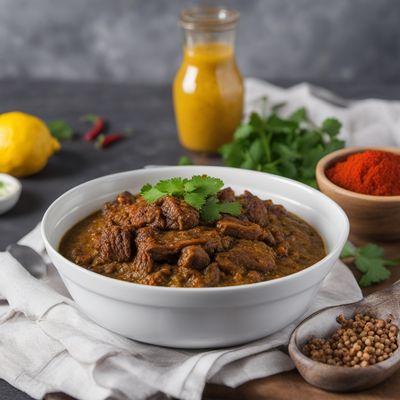
Ingredient
Cattle fresh fat tissue
The Richness of Cattle's Marbled Fat
Cattle fresh fat tissue, also known as suet, is the dense, white fat found around the kidneys and loins of cattle. It has a firm yet pliable texture and a creamy, off-white appearance. This ingredient is prized for its high fat content, which contributes to its rich flavor and ability to enhance the taste and texture of various dishes. When cooked, the fat melts, releasing its savory essence and imparting a luscious mouthfeel to the food. Its marbled appearance adds visual appeal to dishes, making it a favorite among chefs and home cooks alike.
Origins and history
Cattle fresh fat tissue has been used in culinary practices for centuries. It has a long history in traditional British and European cooking, where it was commonly used in the preparation of traditional puddings, pastries, and savory dishes. In many cultures, suet has been a valuable source of fat for cooking and baking, especially in regions where other fats were scarce. Today, it continues to be a cherished ingredient in both traditional and modern cuisines around the world.
Nutritional information
Cattle fresh fat tissue is high in calories and saturated fats. It provides a good source of energy and is rich in fat-soluble vitamins, such as vitamin A and vitamin E.
Allergens
Cattle fresh fat tissue may contain allergens for individuals with beef or animal fat allergies.
How to select
When selecting cattle fresh fat tissue, look for a firm and creamy white fat with minimal discoloration or blemishes. Avoid fat that appears yellowish or has a rancid smell, as this indicates spoilage.
Storage recommendations
To maintain the freshness and quality of cattle fresh fat tissue, it should be stored in an airtight container or wrapped tightly in plastic wrap. It can be refrigerated for up to a month or frozen for longer-term storage.
How to produce
Cattle fresh fat tissue is typically produced during the butchering process of cattle. It can be obtained from a local butcher or meat supplier.
Preparation tips
Before using cattle fresh fat tissue, it is important to render or melt the fat to remove any impurities. This can be done by gently heating the fat over low heat until it liquefies. The rendered fat can then be strained and used in various cooking applications, such as frying, sautéing, or baking. It is commonly used in dishes like pie crusts, pastries, and traditional British puddings.
Substitutions
Butter or vegetable shortening can be used as substitutes for cattle fresh fat tissue in recipes that call for its use. However, keep in mind that the flavor and texture may differ slightly.
Culinary uses
Cattle fresh fat tissue is widely used in both sweet and savory dishes. It is commonly used in the preparation of traditional British puddings, such as Christmas pudding and suet dumplings. It is also used to make flaky and tender pie crusts, adding richness and flavor. In savory dishes, it can be used to enhance the flavor of stews, casseroles, and meat fillings.
Availability
Cattle fresh fat tissue is commonly available in regions where beef is consumed, such as North America, Europe, and Australia.

